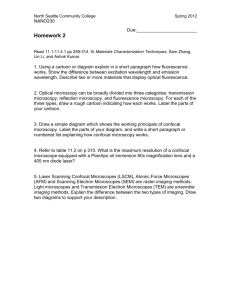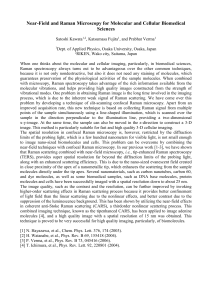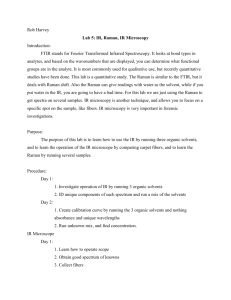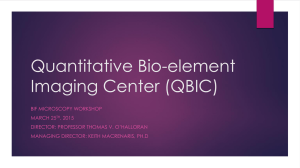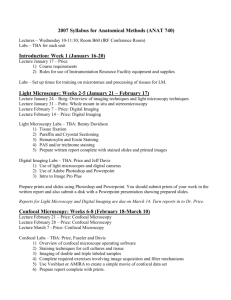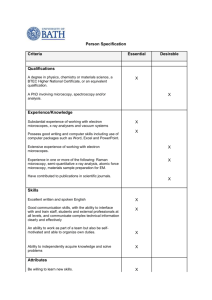Techniques for nanoscale measurement and manipulation
advertisement
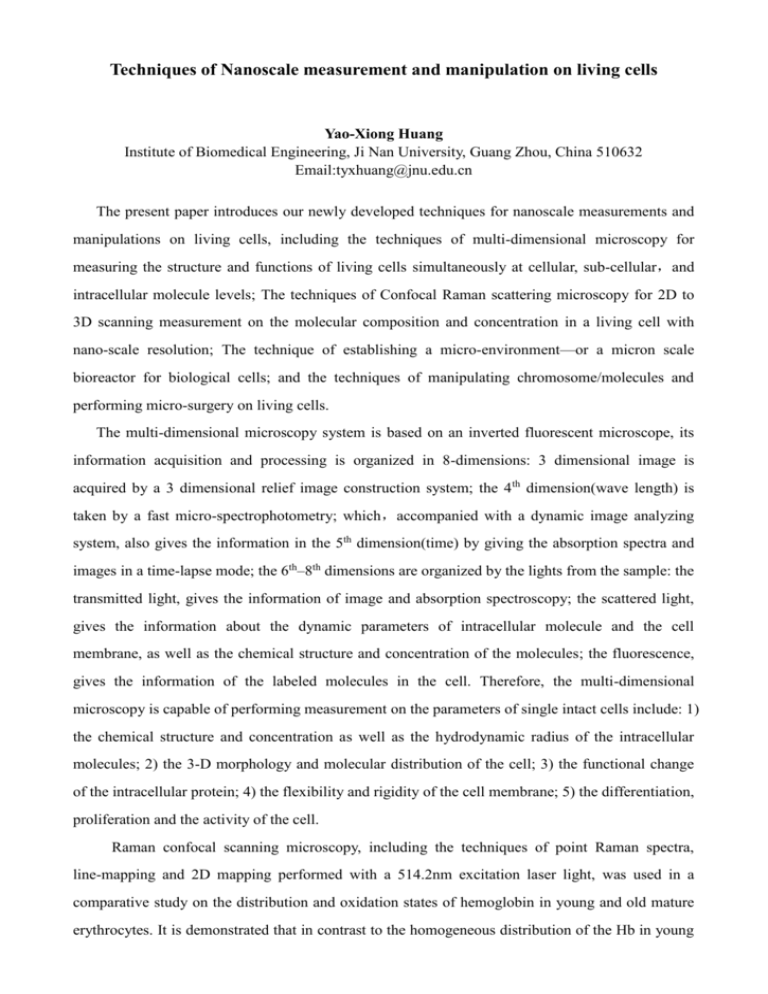
Techniques of Nanoscale measurement and manipulation on living cells Yao-Xiong Huang Institute of Biomedical Engineering, Ji Nan University, Guang Zhou, China 510632 Email:tyxhuang@jnu.edu.cn The present paper introduces our newly developed techniques for nanoscale measurements and manipulations on living cells, including the techniques of multi-dimensional microscopy for measuring the structure and functions of living cells simultaneously at cellular, sub-cellular,and intracellular molecule levels; The techniques of Confocal Raman scattering microscopy for 2D to 3D scanning measurement on the molecular composition and concentration in a living cell with nano-scale resolution; The technique of establishing a micro-environment—or a micron scale bioreactor for biological cells; and the techniques of manipulating chromosome/molecules and performing micro-surgery on living cells. The multi-dimensional microscopy system is based on an inverted fluorescent microscope, its information acquisition and processing is organized in 8-dimensions: 3 dimensional image is acquired by a 3 dimensional relief image construction system; the 4th dimension(wave length) is taken by a fast micro-spectrophotometry; which,accompanied with a dynamic image analyzing system, also gives the information in the 5th dimension(time) by giving the absorption spectra and images in a time-lapse mode; the 6th–8th dimensions are organized by the lights from the sample: the transmitted light, gives the information of image and absorption spectroscopy; the scattered light, gives the information about the dynamic parameters of intracellular molecule and the cell membrane, as well as the chemical structure and concentration of the molecules; the fluorescence, gives the information of the labeled molecules in the cell. Therefore, the multi-dimensional microscopy is capable of performing measurement on the parameters of single intact cells include: 1) the chemical structure and concentration as well as the hydrodynamic radius of the intracellular molecules; 2) the 3-D morphology and molecular distribution of the cell; 3) the functional change of the intracellular protein; 4) the flexibility and rigidity of the cell membrane; 5) the differentiation, proliferation and the activity of the cell. Raman confocal scanning microscopy, including the techniques of point Raman spectra, line-mapping and 2D mapping performed with a 514.2nm excitation laser light, was used in a comparative study on the distribution and oxidation states of hemoglobin in young and old mature erythrocytes. It is demonstrated that in contrast to the homogeneous distribution of the Hb in young cells, there are more Hb distribute around the cell membrane or bound to the cell membrane in old erythrocyte. The proteins exhibit some extent of aggregation and conformational change, present less ability of oxidation than the Hb in young erythrocytes. Our results show the first time that Raman confocal microscopy is a powerful tool to measure the distributions of Hb with different molecular conformations in a living RBC, and the variation of the molecular conformation with time. The methodologies have been also employed to the measurement on different kinds of cells, such as lymphocyte and K562 cell. Micro aqueous environments for biological cells with sizes of 10-20 m in diameter were established in a drop of oil on a glass slide. Some smaller bubbles of additive solutions were also prepared and fused into the micron scale bioreactor with a cell or microbes inside, to vary its biochemical conditions. Since the micro-environment can help to keep the substances released from the cell at a measurable concentration, and keep the cell stay at a right position during the measurement of the Raman spectrum scanning, the results of the measurements can reflect more precisely the true behavior of the cell and the situation of its molecules under different conditions. The chromosome/molecule manipulating and living cell micro-surgery were performed by using a super laser microscope working station which consists of a laser tweezer and a laser scissor system. By combining both the techniques, chromosome can be cut, removed and melted with each other to change the genetic property. The similar technique can be also used for the micro-processing of biological cells and other biological tissues. Resume of Yao-Xiong Huang A Professor of Biophysics & Biomedical Engineering, and the director of the Institute of Biomedical Engineering, Ji Nan University. He is also the Member of the Academic Degree Committee of the State Council of China; the Vice President of the Chinese Society of Medical Physics; the Member of the Science Committee of International Organization of Medical Physics; the President of GuangDong Society of Biophysics; the Vice President of GuangDong Society of Biomedical Engineering; and the Standing Member of Guang Zhou Association of Science & Technology. He has won eleven academic awards and honors including a First Class Award of Natural Science, from The State Education Commission of China and 2 Second Class Awards of Scientific and Technical Progress, from The State Education Commission of China. In the past 20 years, he has published 5 academic books and over 200 papers.
